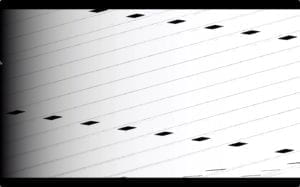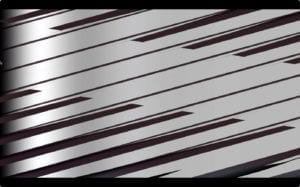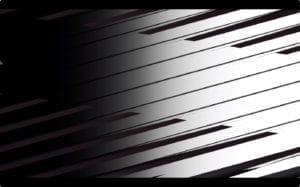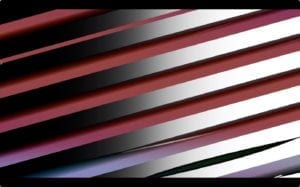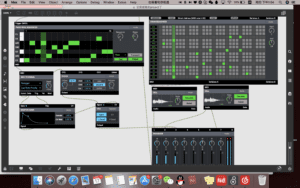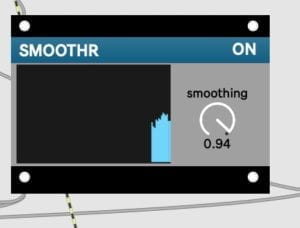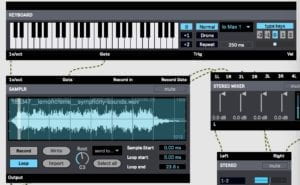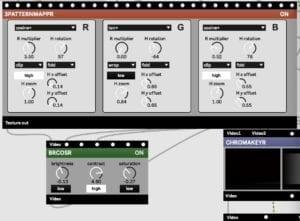Title
Butterfly love story
Project Abstract
Our project tells a story of the butterfly love story, we use shadows to present the whole story, and then add max effects on the screenshot.
Project Description
our project is about two young people who fall in love with each other, but because their families do not allow them to be in the relationship, they are forced to apart. They choose to die together as a way of revolting, and finally, they become two butterflies and can be together forever. Because we want to simplify the story so that the audience can understand more easily, we choose to use the process of a flower’s blossom to represent the love between two people. At the very beginning, we use the flute to lead in the story, and then the music is played by the piano. Here we used the wavy lines to create a soft shadow shape, then the flower appears, we use three layers of the petal to present the process of blossoming. With the blossoming of the flower, the love between two people grows, and when the flower encounters the lightning and thunder, the couple is bearing the scold and fury from their family. finally, the flower turns into two butterflies, and the music approaches peace.
We are inspired by the Chinese traditional music piece Liangzhu, this music piece was written according to this butterflies love legend. We use it as the background of our project, my partner and I played and recorded it.
Perspective and Context
We design our music to be played by both piano and flute, and the flute just appears at the very beginning and the most intense part. And there is a part of staccato notes, it makes people have the synaesthesia that something is jumping, so we connect it with birds, we add the sound of birds here, and we laser cut a bird, control it to fly around the flower here. What I like the most is the use of board pierced with different shapes in our project. This is inspired by the demo, an artist projects the shadow on the screen just using a board with strikes, and by rotating, curving, and moving forward and back. This creates an amazing change between light and shadow.
(the photos of boards)
And during different stages of the flower’s growth, we used different shapes of shadow to present different scenes. We use wavy lines to present soft and gentle stream in the spring, spots to present the sparkle and jumping lights in the summer, and broken lines to present the drastic lightening.
The use of holographic paper and mirror paper is inspired by the reading and video about Lumia. We thought about how to create the change in the light using the easiest way, without the help of technology. And it turns out that the effect is great.
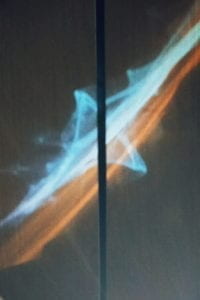
We use easemappr to cover the scene with changing the filter, and at the most drastic part, we add the effect of rotating and zooming to show the conflict.
Development & Technical Implementation
We use the laser to cut the box to hold the whole project, and we also cut different layers of the petal, birds, and butterflies.

we designed three layers of petals to present the process of blossoming.


we designed a groove through which we can push the flowers into the box, but then we discovered that it is hard to make the flowers stand because the board is too thin. So we finally need someone to hold the board in case it would fall down.
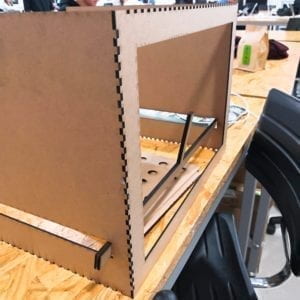
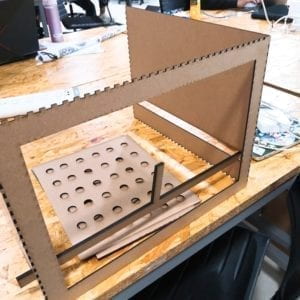
I found the upper line of the front board will cover a part of the shadow, so then we decided to cut it off.

As for the light source, firstly we bought ten small led lights online, but then we found out that they are not strong enough to create any shadow. So then we borrowed supplementary lightning from the equipment room, but then we found it did not work because it is not a spotlight, it doesn’t generate a clear shadow. Multiple lights will be bright enough, but it will decrease the shadow. Finally, we choose to use a torch as the light source. From this, I learn that to create a clear shadow, I need to use a strong spotlight.
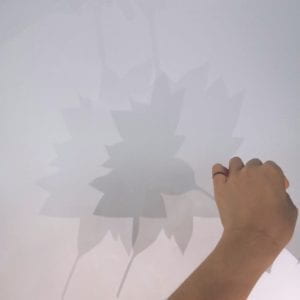

(first time of testing the phone’s flashlight)
One issue we met when adding the max effects was the samplr could not make the sound correctly. It was because I did not know I need to connect the “gate” between the keyboard and samplr. Also, when I wanted to mute samplr for a while and then restart it to play a piece of music at a certain period of time, I met the issue that I have to press the keyboard again, but the keyboard can not be linked to mixmid. Therefore, I chose to adjust the volume in the sound mixer instead.
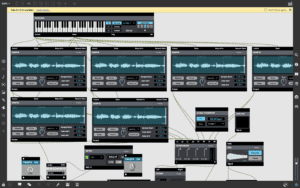
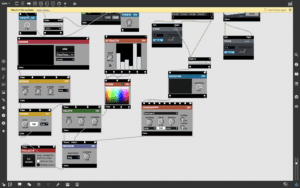
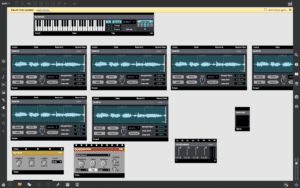
(the capture of the present mode)
Performance
Because we are a group of two, it is a little hard for us to control the physical part, the light, and the mixmid at the same time, so when we gave the presentation, we invited Ellen to help us move the boards and objects. But I also think it would be better if we can figure out a way of fixing the light. During the presentation, Joyce controls the physical movement of the boards while I control the mixmid to control the max. We have rehearsed before presenting, which helps us to perform fluently. But because we are in a very dark environment, so I can’t see the knobs clearly, so it is important to remember the position and rehearse before performing.


One thing we didn’t expect is that the effect of holographic was not clear during the performance, maybe it was is because that the environment of the classroom and auditorium is different, but in all, this didn’t bring a big influence to our performance. Another thing was that in the auditorium we couldn’t find a white wall for us to project the shadow, so we temporarily pasted a brown paper to the wall. But the paper wasn’t large enough to cover all the areas we were going to project, and if I move the camera closer, it could not focus. I have already adjusted the focus of the web camera to the smallest, it still could not focus on such a short distance. So during the performance, the audience could always see the purple background on the screen, which was not pleasing.
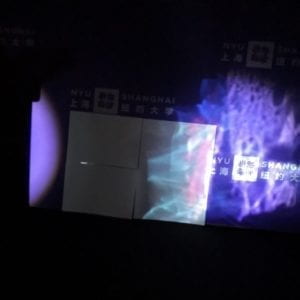
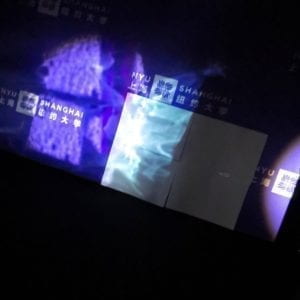
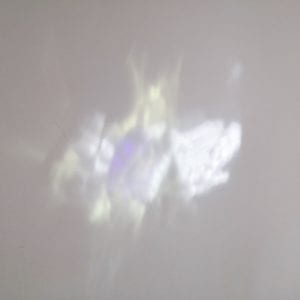
(directly see the Lumia created by holographic paper and mirror paper)
Conclusion
As for the good part, I love the holography appeared in our project very much, also I am proud of the design of the pierced board. In the demo video, we see the artist just use strikes, but I made more boards with spots, wavy lines and jaggies to create different shadow shapes. I do think we have good ideas, like using laser-cut boards to create different shapes of shadows and using holographic paper to create a colorful and variegated scene. But we did not apply these ideas into our project fully and perfectly, they just appear here, but we did not let it generate the effect it could generate. When we present, because of the influence of the web camera, we cannot see the holographic Lumia clearly on the screen. In the future, the first thing to consider is applying max more to my project. One thing l learn from the first project named “eyeball” is that do not limit the scene to the object we shoot or focus on, but we can move forward using the max. They start from the water drops with different colors in the water, but later the shape changes into a more abstract shape and leave the audience more space to imagine. So in the next project, I’m thinking about how to use the function in max more to create a more diverse project. Another thing is to think carefully about the connection between music and the way of creating things. Since Liangzhu is a traditional Chinese music piece, maybe we can consider using Chinese instruments instead to improve the sound effect.
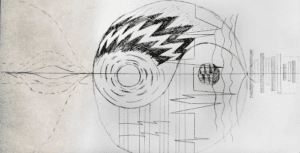 graphicscore
graphicscore